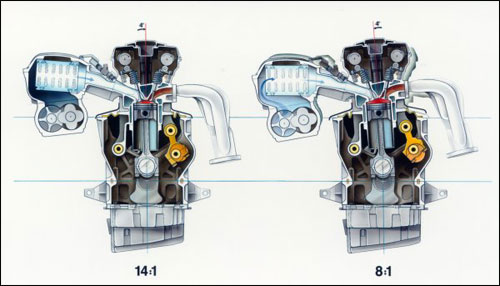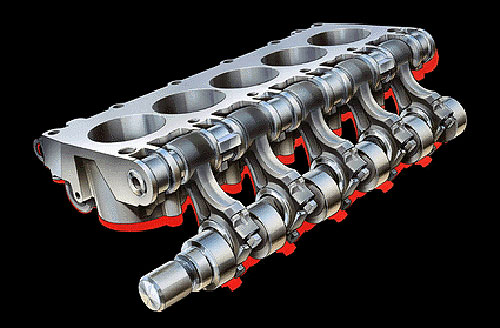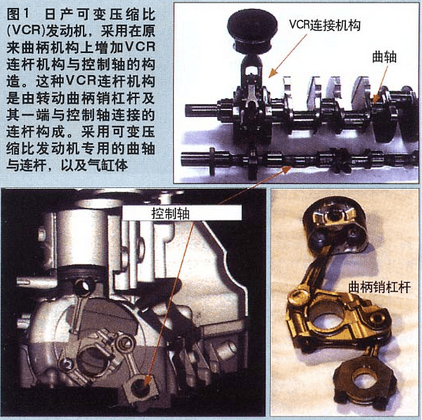One of the future three gasoline swordsmen: variable compression ratio technology
In "Future Gasoline Engine Three Musketeers - Variable Compression Ratio Technology (Part 1)", Che Yunyu introduces you to the news that Porsche wants to use the variable compression ratio technology for the first time in the 2017 boxster. Putting it into practice, Porsche is very likely to become the world's first manufacturer of complete vehicles with variable compression ratio engine production capacity, and take the lead in the market. This article refers to the address: http:// In fact, it is not difficult to find out in the past that the OEMs who have worked tirelessly for the implementation of variable compression ratio technology are far more than the Porsche family. The prototypes and implementation solutions that have been made public are not limited to this one, but why are they disappearing? In the torrent of history? Let's take a brief look and perhaps benefit from it. Those who are familiar with this technology must be clear that if all the variable compression ratio technical solutions that have been proposed are distinguished by implementation, they can be roughly divided into crank linkages with non-conventional structures and changing the distance between the crankshaft and the cylinder tip. And change the length of the piston rod three categories, of which Porsche is the third type of program. (Note: It is important to note here that the Atkinson cycle or the Miller cycle engine also has the variable compression ratio, but since it has been specifically referred to as a cyclical condition, people are discussing variable The compression ratio technique usually ignores it.) Of course, this does not mean that the other two types of schemes will not work at all, because their theoretical feasibility has been extensively demonstrated, but if you have to ask for the failure of the predecessors, then there are only four words - Too verbose. Complex structures can breed many ills, in addition to the cost of manufacturing will rise, some unexpected problems will emerge from time to time to make developers squandered, once smashed Saab SVC (Saab variable compression ratio Technology) Both the engine and the Nissan VCR (Nissan Variable Compression Ratio Technology) have been planted. Cylinder head rotatable Saab SVC engine At the 2000 Geneva Motor Show, a unique "weird guy" attracted the attention of the world, it is the Saab SVC engine. From a structural point of view, this model adopts the first technical solution we have mentioned, that is, changing the distance between the crankshaft and the cylinder tip. According to the principle given by the official, Saab has been reborn in order to achieve a variable compression ratio. First, the cylinder head structure has been redesigned to incorporate a new integrated cylinder head solution that connects the cylinder head to the cylinder block via hydraulic control components instead of bolts. This design was unique in the engine of the time. SVC engine structure Second, the upper half of the SVC engine can also be deflected. As shown in the above figure, the SVC engine is roughly composed of two parts. The cylinder head, piston and valve assembly can be called the first part; and the connecting rod and crankcase are regarded as the second part. Like the conventional engine, the lower crankcase of the model remains stationary while the engine is running, but the upper cylinder and piston parts are centered on the crankshaft and are rotated by the thrust of the hydraulic mechanism to make the combustion chamber volume changes happened. Hydraulic Actuat (hydraulic pusher) More specifically, Saab has a wedge-shaped slider between the cylinder and the cylinder head, and the cylinder is connected to the top of the cylinder by a Hydraulic Actuat. When the Hydraulic Actuat is working, the cylinder tip is hydraulic. A slight deflection is produced under the push (the maximum deflection angle is 4 degrees). Although this deflection angle looks small, when the piston reaches the top dead center, its effect on the compression ratio is enormous. According to reports, the compression ratio of the machine can be continuously changed between 8:1 and 14:1. Then why did this seemingly ingenious solution finally run aground? The problem lies in the integrated cylinder head. I am afraid that even Saab engineers are not expected. First, because this integrated cylinder head can deflect, engineers must design an independent cooling system for it. The cooling oil passage of the system is connected with the cylinder block and sealed with a rubber member. If the rubber member is reciprocated for a long time, it is easily cracked due to fatigue, which causes leakage of the entire cooling oil passage. Furthermore, since the model incorporates a hydraulic pushing device and a continuously variable compression ratio as a development target, it is much more complicated than a conventional internal combustion engine in terms of software and hardware. Especially in terms of software, Saab had not yet mastered a set of proven and reliable control logic to ensure that the engine could run stably with a continuously variable compression ratio. Therefore, the engine was not put into practical use until its bankruptcy. Nissan VCR engine with non-traditional crank connecting rod structure Nissan's VCR engine was also defeated by a complex structure, and the loss was more thorough. Why do you say this? Let's first look at how it achieves a variable compression ratio. Nissan VCR engine core parts diagram As shown in the figure, the adopted scheme of Nissan VCR engine is inconsistent with that of Saab and Porsche. The core technology is a special structure multi-link crank linkage mechanism (the structure is variable with manufacturers such as Audi, BMW and PSA). The compression ratio scheme is exactly the same. This design is never seen in ordinary engines. Simply put, the mechanism adds an additional VCR (variable compression ratio) linkage and a control shaft to the original crank linkage. The VCR link mechanism is composed of a rotating crank pin lever and a connecting link of one end thereof and the control shaft. When the control shaft rotates, the control shaft link will drive the crank pin to rotate and swing the lever. As a result, the top dead center position of the piston is caused to move up and down, and the compression ratio is variable. Some people may question that this structure does not seem to be complicated by Saab's deflection cylinder head. Indeed, the surface looks so. But if you go deeper, the internal problems are enough for developers to drink a few pots. First, the number of connecting rods in this system is quite large, which will lead to an increase in the overall friction loss of the engine. If the engine is excessively worn, it is obviously not acceptable for the market. Second, the multi-link structure also has to increase the overall size of the engine, making the difficulty of the vehicle layout increase, especially for the front-mounted front-drive models where the layout space is stretched, the final result is that the excessive volume is This engine has no place at all. Third, the increase in the number of connecting rods will make the vibration of the engine more difficult to control, which will lead to resonance and abnormal noise. Dog Fence Wire,Invisible Fence Wire,Electric Dog Fence Wire,Invisible Dog Fence Wire Elite-tek Electronics Ltd , https://www.aetertek.ca

